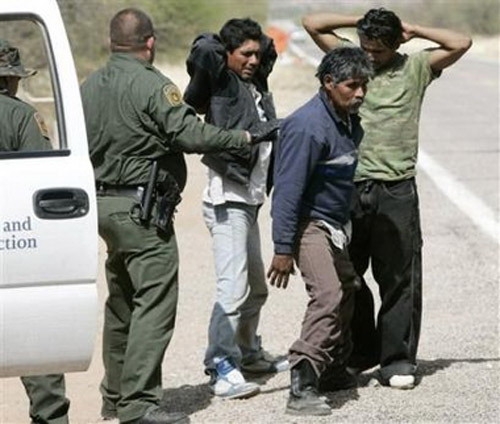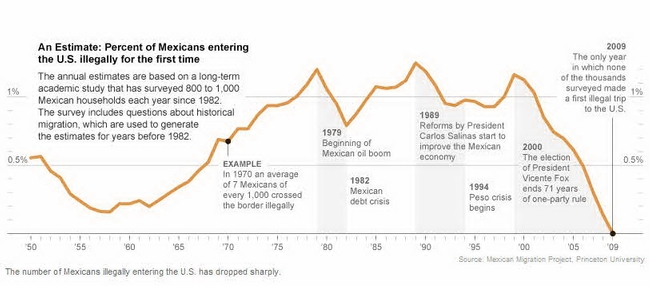
Research by the Mexican Migration Project at Princeton shows that interest in heading to the United for the first time had fallen to its lowest level since at least the 1950s.
An article published in the New York Times reports that the decline in illegal immigration, from a country responsible for roughly 6 of every 10 illegal immigrants in the United States, is stark. The Mexican census recently discovered four million more people in Mexico than had been projected, which officials attributed to a sharp decline in emigration.
American census figures also show that the illegal Mexican population in the United States has shrunk and that fewer than 100,000 illegal border-crossers and visa-violators from Mexico settled in the United States in 2010, down from about 525,000 annually from 2000 to 2004.
The question is why?
In simple terms, Mexican families are smaller than they had once been. The pool of likely migrants is shrinking. Despite the dominance of the Roman Catholic Church in Mexico, birth control efforts have pushed down the fertility rate to about 2 children per woman from 6.8 in 1970, according to government figures.
Crossing “mojado,” wet or illegally, has become more expensive and more dangerous, particularly with drug cartels dominating the border. At the same time, educational and employment opportunities have greatly expanded in Mexico. Per capita gross domestic product and family income have each jumped more than 45 percent since 2000.
A significant expansion of legal immigration is also under way. Congress may be debating immigration reform, but in Mexico, visas without a Congressionally mandated cap on how many people can enter have increased from 2006 to 2010, compared with the previous five years. State Department figures show that Mexicans who have become American citizens have legally brought in 64 percent more immediate relatives, 220,500 from 2006 through 2010, compared with the figures for the previous five years. Tourist visas are also being granted at higher rates of around 89 percent, up from 67 percent, while American farmers have legally hired 75 percent more temporary workers since 2006.
On the other hand, illegal immigration is becoming less attractive. In the mid-1990s, the Clinton administration added fences and federal agents to what were then the main crossing corridors beyond Tijuana and Ciudad Juárez. The enforcement push, continued by President George W. Bush and President Obama, helped drive up smuggling prices from around $700 in the late 1980s to nearly $2,000 a decade later, and the costs continued to climb, according to research from the Center for Comparative Immigration Studies at the University of California, San Diego. It also shifted traffic to more dangerous desert areas near Arizona.
Another important factor is Mexico itself. Over the past 15 years, this country once defined by poverty and beaches has progressed politically and economically in ways rarely acknowledged by Americans debating immigration. Even far from the coasts or the manufacturing sector at the border, democracy is better established, incomes have generally risen and poverty has declined.
Source: New York Times, Better Lives for Mexicans Cut Allure of Going North, by Damien Cave. July 6, 2011
